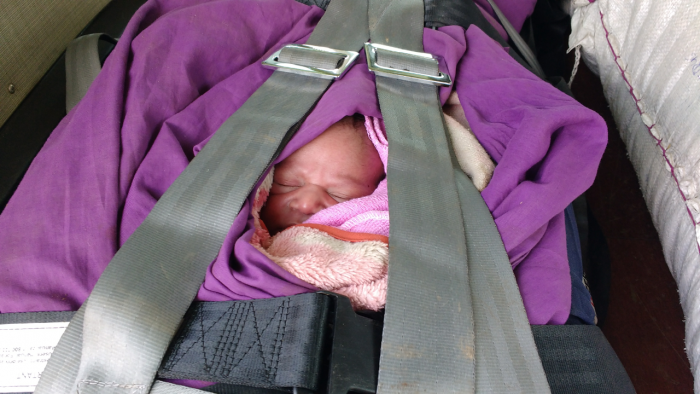A Papua New Guinea Medevac…and other things
On Friday 15th November, there was quite a long program planned for the Goroka based aircraft P2-MAK piloted by Brad Venter. He shares:
“We had to fetch a missionary from Owena, there were a number of other flights planned and we wanted to do a few airstrip surveys. We also had to do a charter in the afternoon that had been planned for some time.
On arrival at the base, we found out about a woman with a retained placenta that was having trouble and needed to be brought out to the hospital. We rearranged the program and by 7:40 am we had departed for Wuyabo to drop of some patients that were returning to their home, a 30-minute flight.
We dropped them off and then Sarah Prins, who currently does a Mission Experience Programme with MAF PNG, did an airstrip survey. Following that, we took off and went to Owena to fetch the missionary there. Sarah did another survey.
Our next stop was to fetch the woman with the retained placenta. On landing, the people in the village brought her to the aircraft on a well-made bamboo stretcher. While I loaded her into the aircraft, Sarah was able to do another airstrip survey.
I had found out in the morning that the woman was unable to sit in the aircraft and so I had brought the stretcher with me. We transferred her to the stretcher and made her comfortable in the shade under the wing of the aircraft. I loaded up some coffee bags to help cover the cost of the flight. Afterward, we loaded the stretcher into the aircraft and I managed to use the harness to secure the stretcher and the women safely in the aircraft.
The challenge was that the baby was still attached to the mother by the umbilical cord and so it was not possible to move the baby from the position it was in. I was worried that if the stretcher moved on takeoff and the baby’s face was covered then it would not be able to breathe. I arranged with the missionary that he would sit in the seat behind the stretcher and monitor the situation with the baby and rectify it if necessary. The woman’s guardian was in the seat next to the patient.
The takeoff went well and during the flight 40-minute flight to Goroka we made sure that we monitored the situation in the back so that we could do something in the event there was a problem.
To get out the valley I had to climb to 12000ft, but as soon as I could I descended again to 8000ft to ensure that the baby was getting adequate oxygen.
On arrival in Goroka, about 11:15 am, we were able to give to the woman a medevac pack that had been prepared by the MAF ladies. Soon afterward, our base staff drove her to the hospital while we continued with the remaining flight program for the day.
The baby appeared to be healthy and we are trusting that we will be able to fly them back to their village sometime soon in the future.”




